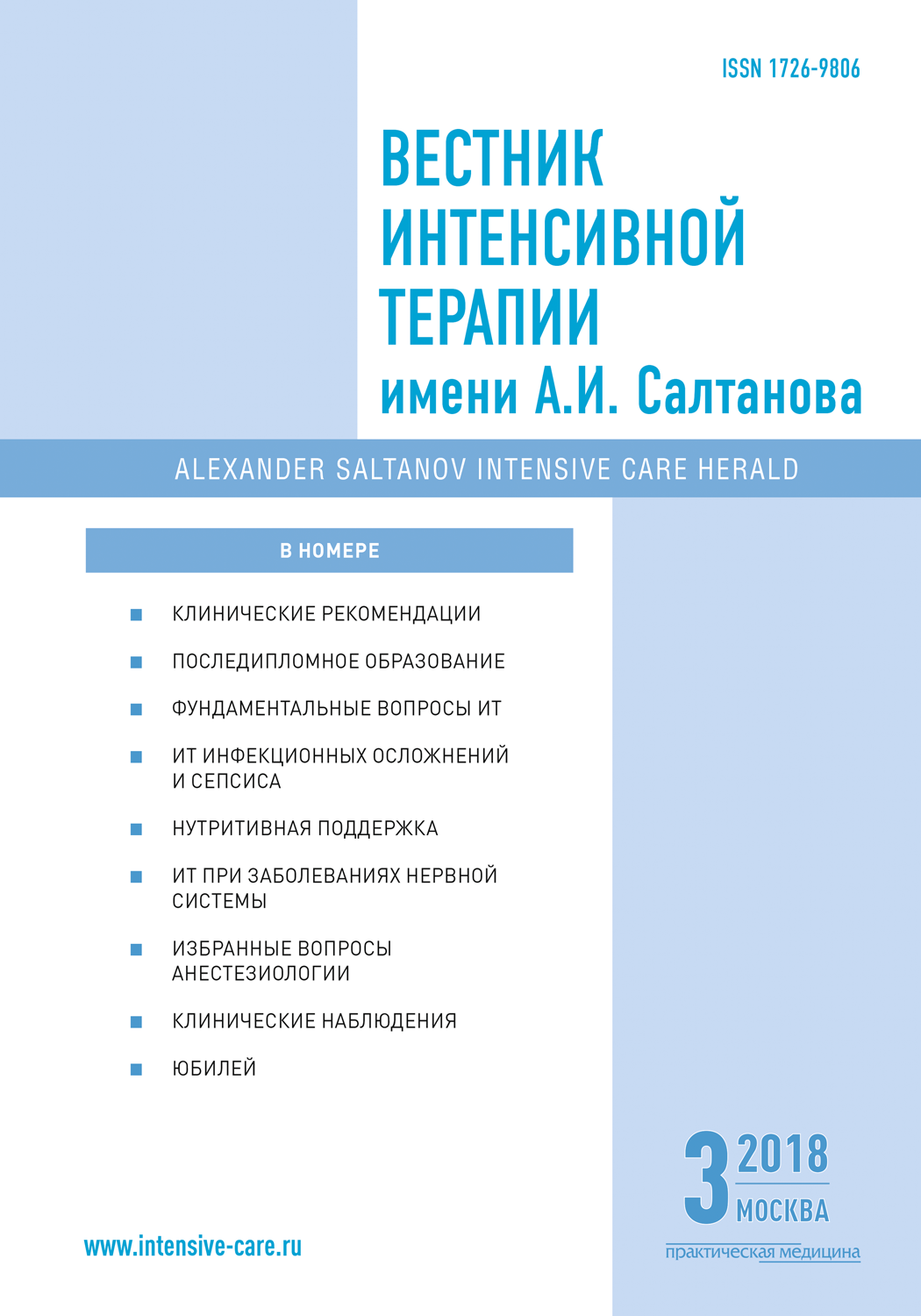Abstract
The aim of the study was a comparative study of the changes in the prevalence of postpartum infectious complications and their risk factors in no observational maternity hospital in the period from 1991 to 2010. A retrospective cohort study of the course of pregnancy and the outcome of labor of 24 634 patients was carried out. A multivariate statistical analysis was performed. The frequency of SSI was 0,45 % (n = 112), endometritis — 0,1 % (n = 15), peritonitis — 0,04 % (n = 12). Over the past 10 years, the incidence of postpartum infectious complications has become significantly lower — 0,42 % (2001–2010) vs. 0,72 % (1991–2000), χ2 = 9,94; p < 0,001. Risk factors: manipulation in the uterine cavity — OR = 1,34 (95% CI 1,12–1,78); prolonged intestinal paresis — OR = 2,25 (95% CI 1,53–3,78); duration of the operation >90 minutes — OR = 1,12 (95% CI 1,06–1,64); severe anemia — OR = 1,47 (95% CI 1,15–2,02). Thus, the main risk factors for postpartum and postoperative infectious complications in patients of no observational maternity hospital the manipulation in the uterine cavity, severe anemia and prolonged intestinal paresis.References
- Септические осложнения в акушерстве. В кн.: Анестезия, интенсивная терапия и реанимация в акушерстве и гинекологии. Клинические рекомендации. Протоколы лечения. 2-е изд., доп. и перераб. Под ред. А.В. Куликова, Е.М. Шифмана. М.: Медицина, 2017: 340–393.[Septic complications in obstetrics. In: Kulikova А.В., Shifman E.M. (Eds.), Anesthesia, intensive care and resuscitation in obstetrics and gynecology. Clinical recommendations. Protocols of treatment. The second edition, supplemented and revised. Moscow: Publishing House “Medicine”, 2017: 340–393. (In Russ)]
- Royal College of Obstetricians and Gynaecologists. Bacterial Sepsis in Pregnancy. Green-top Guideline No. 64a April 2012.
- Kawakita T., Landy H.J. Surgical site infections after cesarean delivery: epidemiology, prevention and treatment. Matern. Health Neonatol. Perinatol. 2017; 3: 12.
- Al-Ostad G., Kezouh A., Spence A.R., Abenhaim H.A. Incidence and risk factors of sepsis mortality in labor, delivery and after birth: population-based study in the USA. J. Obstet. Gynaecol. Res. 2015; 41(8): 1201–1206.
- Buddeberg B.S., Aveling W. Puerperal sepsis in the 21st century: progress, new challenges and the situation worldwide. Postgrad. Med. J. 2015; 91(1080): 572–578.
- Knowles S.J., O’Sullivan N.P., Meenan A.M., et al. Maternal sepsis incidence, etiology and outcome for mother and fetus: a prospective study. BJOG. 2015; 122(5): 663–671.
- Netto C.M., Whitten M., Shetty N. Postpartum sepsis. Br. J. Hosp. Med. (Lond). 2015; 76(8): C118–121.
- Opøien H.K., Valbø A., Grinde-Andersen A., Walberg M. Post-cesarean surgical site infections according to CDC standards: rates and risk factors. A prospective cohort study. Acta Obstet. Gynecol. Scand. 2007; 86(9):1097–1102.
- CDC. Procedure-associated Module SSI. 2017; Available from: https://www.cdc.gov/nhsn/pdfs/pscmanual/9pscssicurrent.pdf.
- Руднов В.А., Кулабухов В.В. Сепсис-3: обновленные ключевые положения, потенциальные проблемы и дальнейшие практические шаги. Вестник анестезиологии и реаниматологии. 2016; 13(4): 4–11. [Rudnov V.A., Kulabukhov V.V. Sepsis-3: updated main definitions, potential problems and next practical steps. Vestnik anesteziologii i reanimatologii. 2016; 13(4): 4–11. (In Russ)]
- Pacheco L.D., Saade G.R., Hankins G.D. Severe sepsis during pregnancy. Clin. Obstet. Gynecol. 2014; 57(4): 827–834.
- Fennimore R., Fabbri S., Miranda-Seijo P. Panniculectomy at the Time of Cesarean Section and Postoperative Wound Complications in Morbidly Obese Women. J. Reprod. Med. 2015; 60(11–12): 535–539.
- Stapleton H. Wound healing in obese women following caesarean section. Obstet. Gynecol. 2015; 126(4): 708–715.
- Гипертензивные расстройства во время беременности, в родах и послеродовом периоде. Преэклампсия. Эклампсия. В кн.: Анестезия, интенсивная терапия и реанимация в акушерстве и гинекологии. Клинические рекомендации. Протоколы лечения. 2-е изд., доп. и перераб. Под ред. А.В. Куликова, Е.М. Шифмана. М.: Медицина, 2017: 66–133.[Hypertensive disorders during pregnancy, during childbirth and the puerperium. Preeclampsia. Eclampsia. In: Kulikov А.В., Shifman E.M. (Eds.), Anesthesia, intensive care and resuscitation in obstetrics and gynecology. Clinical recommendations. Protocols of treatment. The second edition, supplemented and revised. Moscow: Publishing House “Medicine”, 2017: 66–133. (In Russ)]

This work is licensed under a Creative Commons Attribution-NonCommercial-ShareAlike 4.0 International License.
Copyright (c) 2018 ANNALS OF CRITICAL CARE

